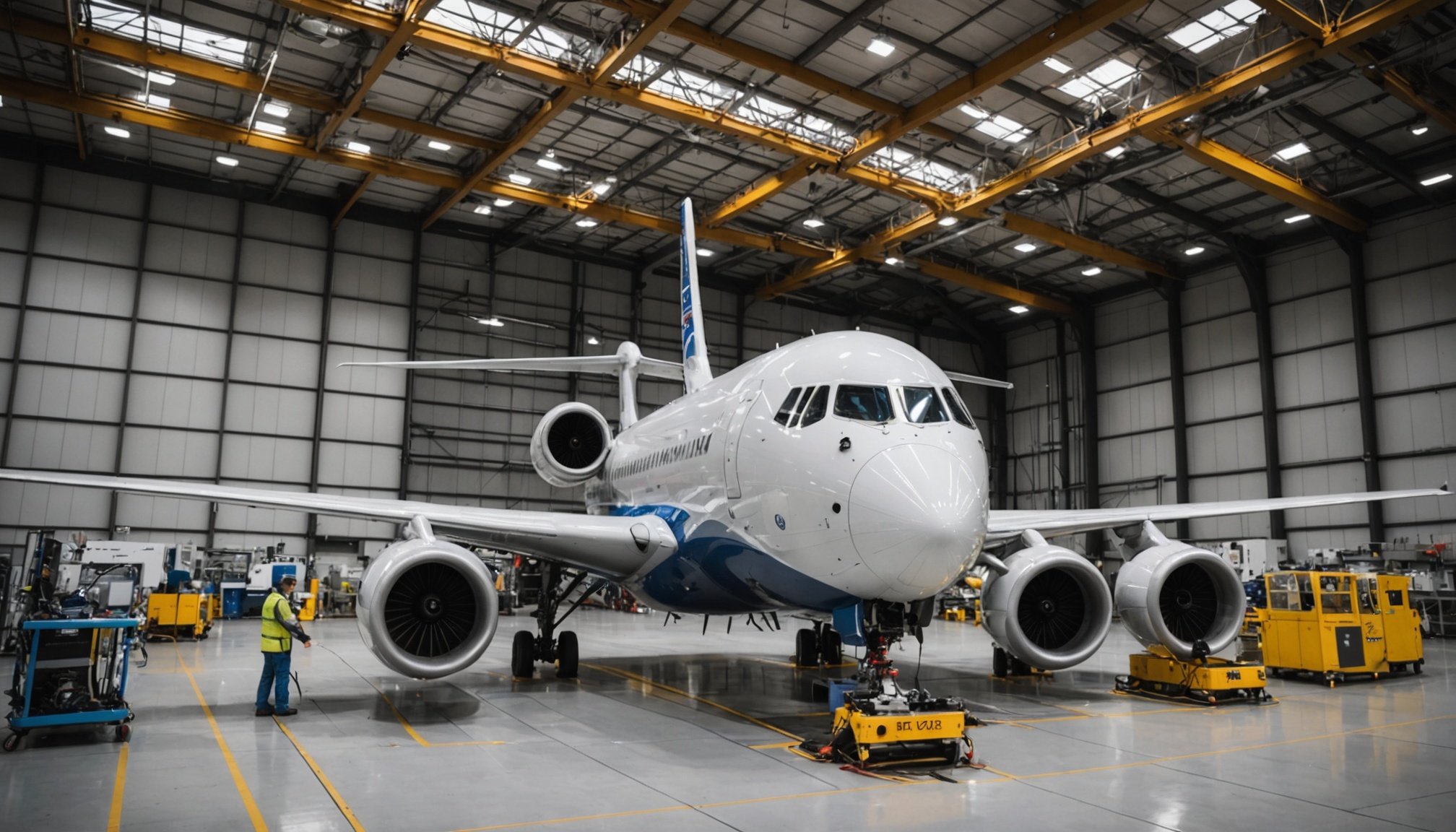Overview of Predictive Maintenance in Aerospace Engineering
In Aerospace Engineering, predictive maintenance plays a crucial role. It involves using data analysis and AI to predict equipment failures before they occur. This proactive approach can significantly enhance aircraft safety and reduce maintenance costs. Traditionally, maintenance strategies were reactive, addressing issues post-failure. However, with predictive maintenance, problems are tackled before they arise, minimising downtime and extending the lifespan of components.
The evolution of maintenance in aerospace reflects advancements in technology and methodology. Initially, aerospace maintenance relied heavily on scheduled check-ups and replacements. As the industry advanced, Condition-Based Maintenance (CBM) emerged, analysing condition-monitoring data to inform maintenance decisions. Now, predictive maintenance, powered by AI Integration, stands at the forefront, offering unparalleled efficiency.
This might interest you : Revolutionizing Healthcare Training: The Impact of Augmented Reality on Medical Education Advancement
Incorporating AI has been a game-changer. AI’s role in predictive maintenance revolves around processing extensive data from various aircraft systems to identify patterns and predict failures. By learning from historical data, AI enhances prediction accuracy, ensuring that aerospace engineers can plan and execute maintenance effectively. This integration of AI not only streamlines operations but also fosters a more resilient and responsive aerospace environment.
Technological Advancements Driving AI in Aerospace
In the realm of Aerospace Engineering, the fusion of AI Technologies catalyses significant advancements.
In parallel : Revolutionizing Online Verification: The Role of Blockchain Technology in Streamlining Digital Identity Authentication
Machine Learning and Data Analytics
Machine learning fosters substantial strides in analysing aerospace data. By leveraging sophisticated algorithms, aerospace engineers can derive insights from vast datasets with unprecedented accuracy. This elevates predictive maintenance efficiency and facilitates proactive solutions.
Internet of Things (IoT) Applications
The integration of IoT devices into aerospace systems enhances monitoring capabilities remarkably. IoT enables real-time data collection from aircraft components, thus enriching data analytics. This brings about improved predictive models that nudge the industry towards greater reliability and safety.
Real-time Monitoring Solutions
In aerospace, real-time monitoring is pivotal for decision-making processes. Employing AI Technologies and IoT, it empowers operators to make timely, informed decisions. Continuous data feeds aid in tracking aircraft health and performance, allowing for precise intervention strategies when anomalies are detected. This real-time approach not only ensures the seamless functioning of aircraft but also optimises operational costs by mitigating unforeseen failures. As these technologies continue to evolve, their adoption fortifies the aerospace industry’s commitment to cutting-edge AI Integration.
Benefits of AI in Predictive Maintenance
The integration of AI in predictive maintenance offers several compelling benefits to aerospace engineering. A primary advantage is the improved accuracy in predicting equipment failures. Through AI algorithms, maintenance schedules can be impeccably timed to intervene before issues arise, enhancing reliability and efficiency. This anticipatory approach ensures that maintenance activities are performed precisely when required, rather than as a routine task or post-failure reaction.
Furthermore, AI-driven predictive maintenance leads to notable cost reduction. By optimising maintenance strategies, aerospace companies minimise unnecessary inspections and parts replacements. This not only saves on labour and material expenses but also reduces the aircraft’s downtime, resulting in higher operational efficiency. Consequently, airlines and manufacturers benefit from streamlined processes that avoid the hefty costs associated with reactive maintenance approaches.
Additionally, AI enhances the safety and reliability of aerospace operations. Predictive maintenance powered by AI aids in early detection of potential malfunctions, thus preventing catastrophic failures. The use of sophisticated algorithms to evaluate and process data ensures that components perform optimally throughout their lifecycle, thereby supporting safer and more consistent aerospace operations over time.
Benefits of AI in Predictive Maintenance
The integration of AI in predictive maintenance heralds significant advancements in **Efficiency* and *Cost Reduction* within the aerospace sector. By leveraging **AI Technologies**, aerospace companies have witnessed a monumental shift in predicting equipment failures accurately. This fine-tuning of maintenance scheduling means anomalies are detected ahead of time, averting potential malfunctions and ensuring aircraft safety.
A precise prediction framework allowed by AI integration not only optimises maintenance strategies but also significantly reduces operational expenditure. Maintenance tasks can be scheduled more effectively, eliminating unnecessary repairs and extending component longevity. This strategic approach minimizes downtime and consequently lowers overall costs.
The benefits extend further with increased safety. AI-enhanced predictive maintenance ensures that aircraft are consistently in optimal condition, bolstering the reliability of aerospace operations. Unexpected failures and the associated risks are dramatically reduced, fostering trust in airline safety for operators and passengers alike.
In incorporating AI, aerospace companies are not just advancing technologically; they are reshaping maintenance paradigms. The resultant increase in predictive maintenance efficiency and cost reduction ultimately supports a safer, more reliable aviation industry, ushering in an era of unprecedented operational integrity.
Overview of Predictive Maintenance in Aerospace Engineering
Predictive Maintenance in Aerospace Engineering revolutionises management by using AI Integration to foresee equipment failures. This method allows aerospace engineers to address issues before they manifest, thus maximising operational efficiency and minimising aircraft downtime. Historically, maintenance was reactive, with strategies maturing from routine to Condition-Based Maintenance (CBM). Today, AI-powered predictive maintenance leads the industry, reflecting significant technological progress.
AI’s role in this evolution is pivotal, streamlining processes and improving forecast precision through analysis of vast historical data. Whether it’s engine systems or avionics, AI processes vast troves of information, discerning patterns that predict failures. This proactive approach not only extends the lifespan of aircraft components but also ensures safety standards are met consistently.
The positive impact is evident in reduced operational costs and enhanced aircraft reliability. By pre-empting problems, companies can plan maintenance to fit seamlessly with schedules, reducing the need for costly emergency repairs. In incorporating AI, the aerospace industry not only optimises its maintenance strategies but also bolsters its commitment to innovation and safety, leading to a drastic shift towards a more predictive and resilient operational model.
Challenges in Implementing AI for Predictive Maintenance
AI Integration in Predictive Maintenance within Aerospace Engineering presents notable challenges, especially regarding Data Security and organizational culture. As aircraft systems gather vast streams of sensitive data, protecting this information becomes paramount. The aerospace sector must navigate security landscapes, ensuring data is both safe and privacy-compliant.
Integrating AI into pre-existing infrastructure and workflows adds another layer of complexity. Many legacy systems were not designed to accommodate advanced AI technologies, creating potential Integration Issues. This often requires extensive system overhauls or the development of hybrid models that efficiently unite old and new technologies. Addressing such issues demands time, financial investment, and innovation.
A critical component of overcoming these obstacles is cultivating a skilled workforce capable of harnessing AI’s potential. The emergence of AI requires new skill sets, which means companies must focus on training and developing talent skilled in these cutting-edge technologies. Beyond technical skills, a cultural shift is necessary, encouraging acceptance and enthusiasm for AI-driven methodologies. Successfully navigating these challenges can lead to transformations that not only enhance operational efficiency but also maintain the industry’s commitment to safety and innovation.
Case Studies of AI-Driven Predictive Maintenance
Examining Case Studies within aerospace illuminates the transformative effect of AI on Predictive Maintenance. Major players like Boeing and Airbus exemplify the sector’s successful Implementations of AI-driven strategies.
Boeing’s AI Initiatives
Boeing leverages AI Integration to bolster its predictive maintenance capabilities. By deploying sophisticated machine learning models, Boeing can anticipate potential failures with remarkable precision. This approach significantly reduces downtime, optimising aircraft operational efficiency. Historical data analysis allows for efficient scheduling of maintenance, preventing unexpected malfunctions and enhancing fleet reliability.
Airbus and Predictive Analytics
At Airbus, Predictive Analytics plays a pivotal role in maintenance decision-making. The integration of Data Analytics enables Airbus to process vast datasets, identifying patterns and trends crucial for precise maintenance planning. This not only minimises operational disruptions but also enhances aircraft safety, addressing potential issues before they impact flight operations.
Lessons from Industry Leaders
Insights gleaned from these leaders underscore the importance of embracing AI technologies. Successful AI Integration provides crucial lessons for the aerospace industry on improving predictive maintenance efficiency. Furthermore, these examples highlight a collective industry shift towards innovation, reflecting a commitment to fostering a more resilient and responsive aerospace environment.











